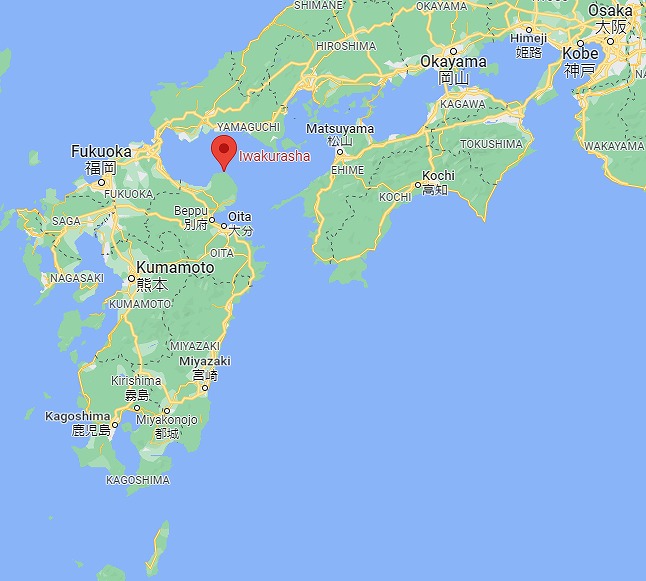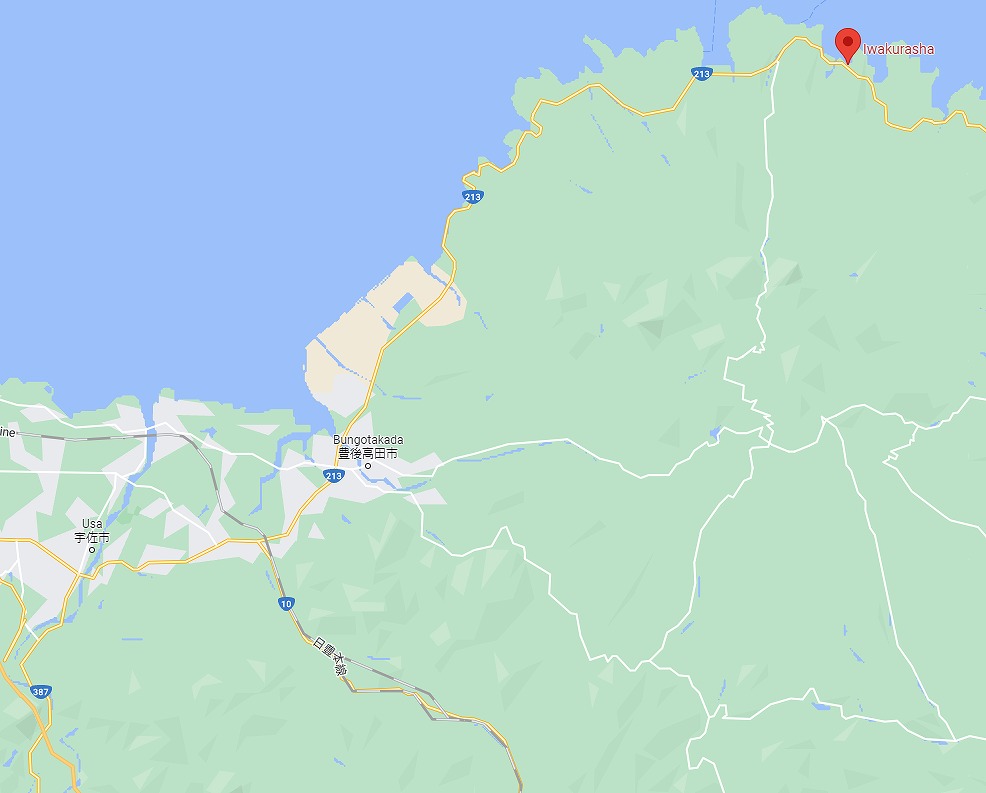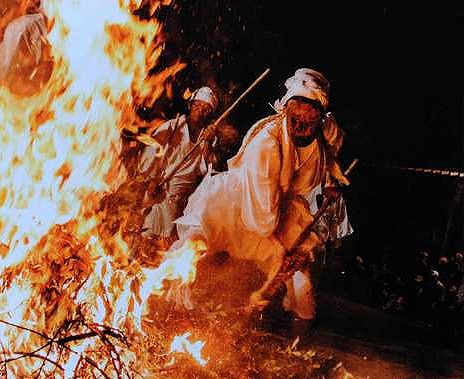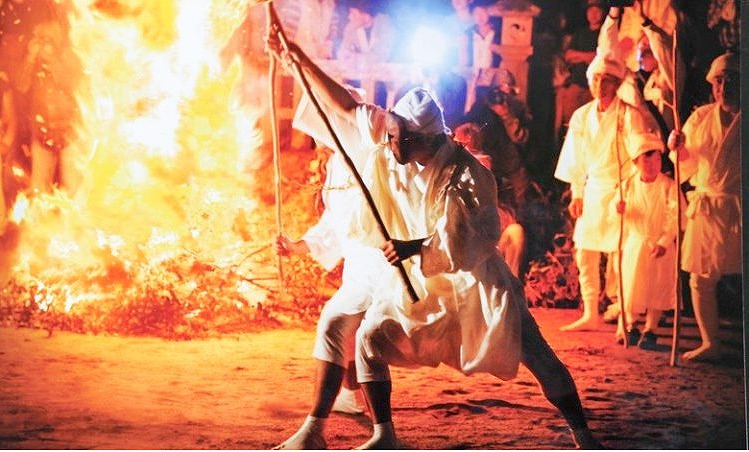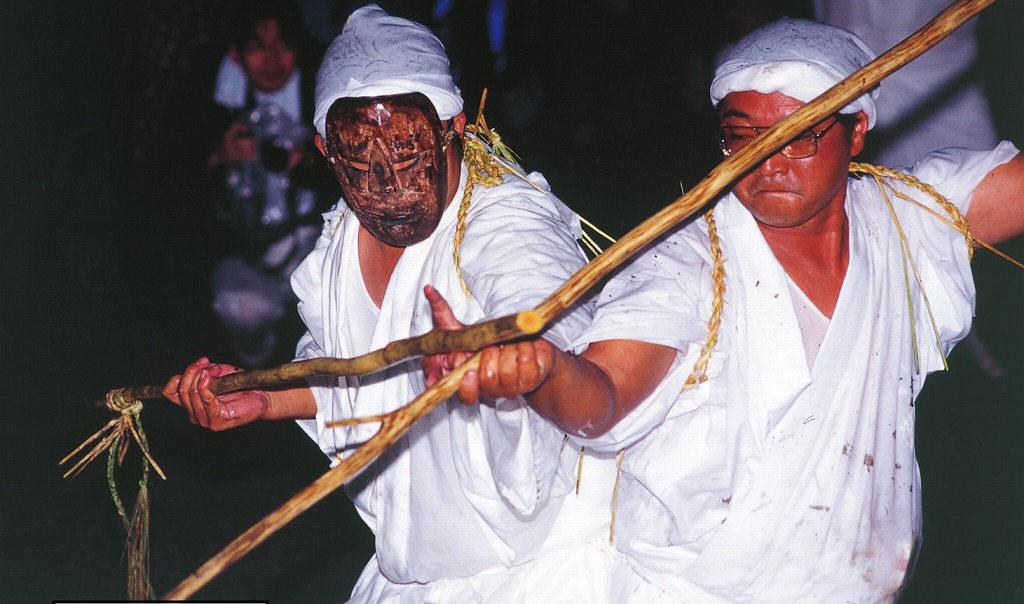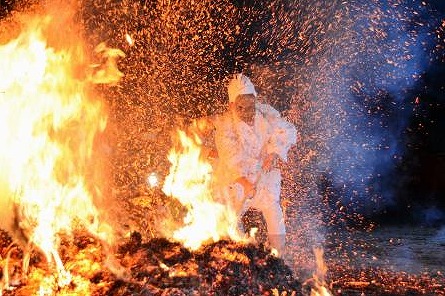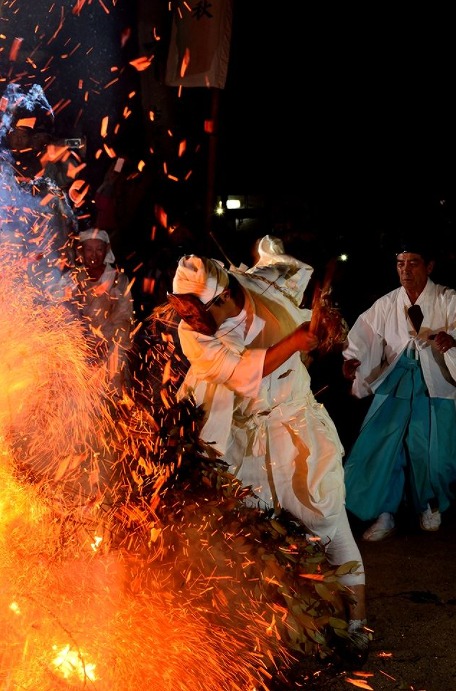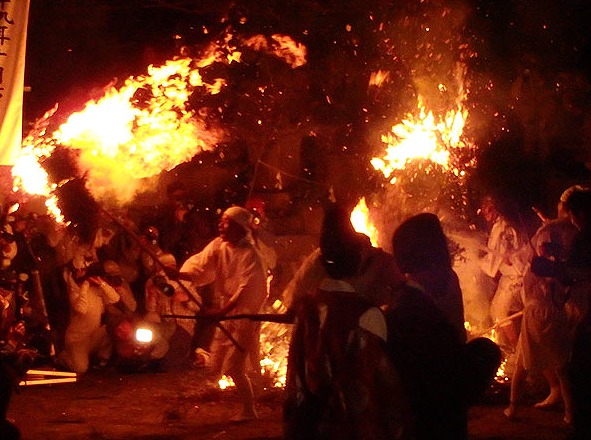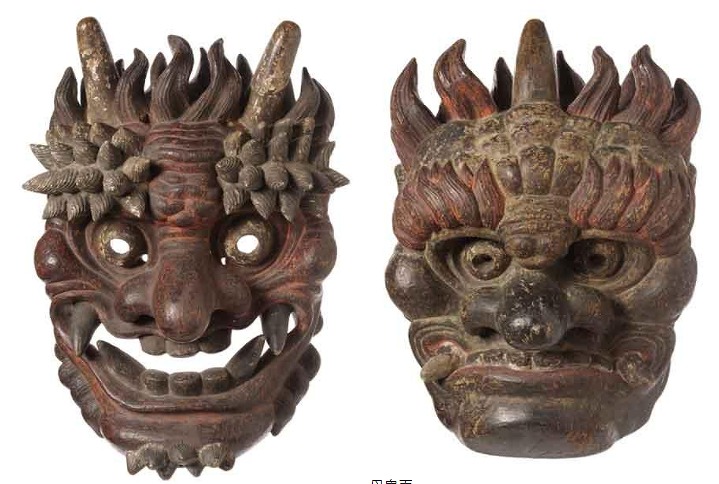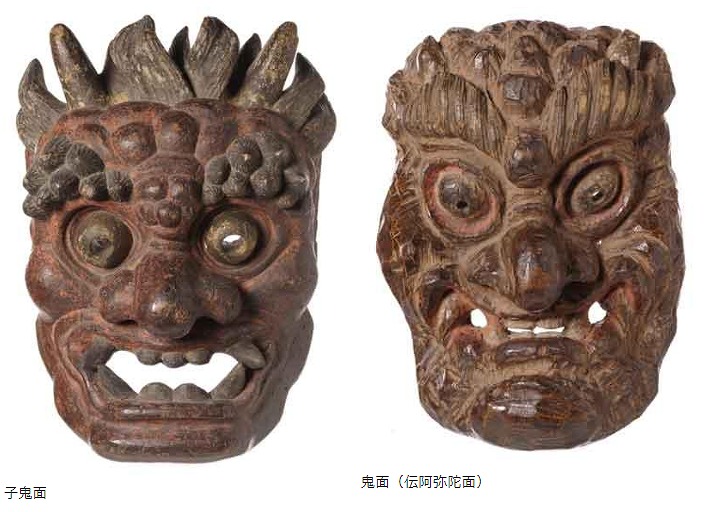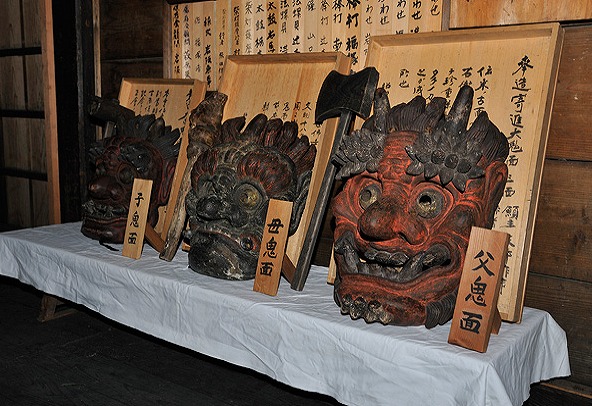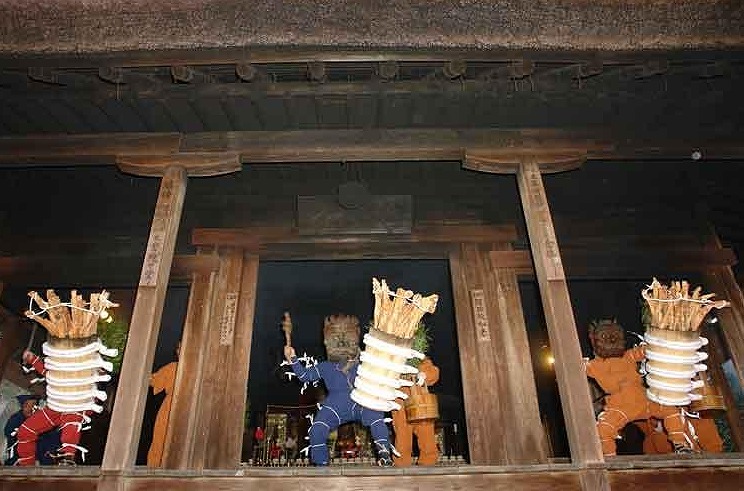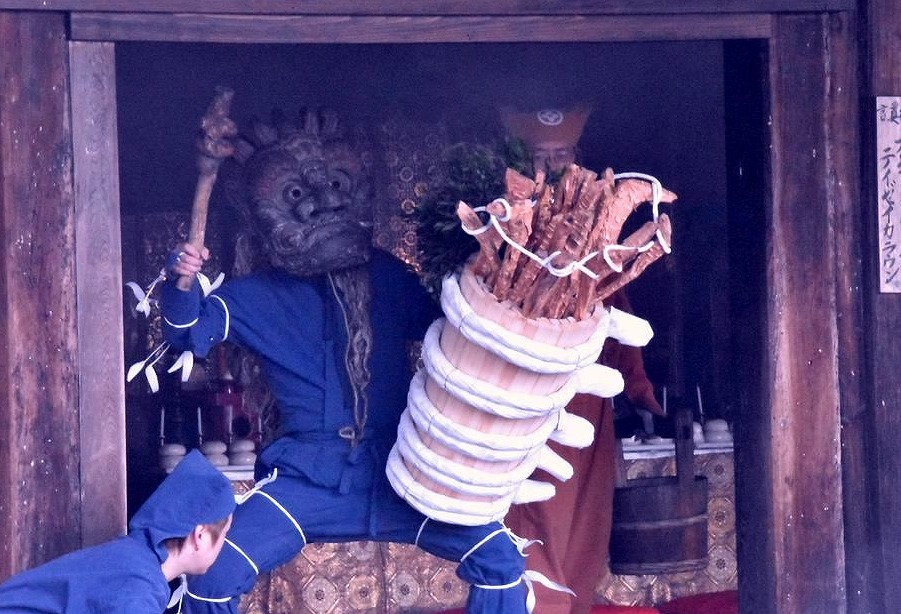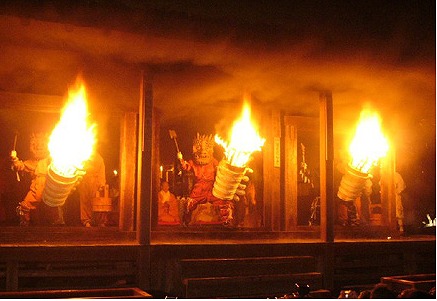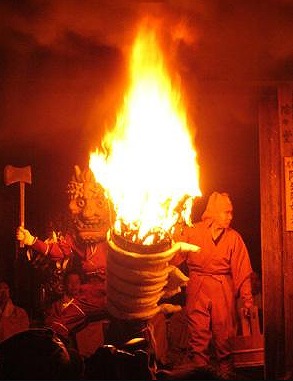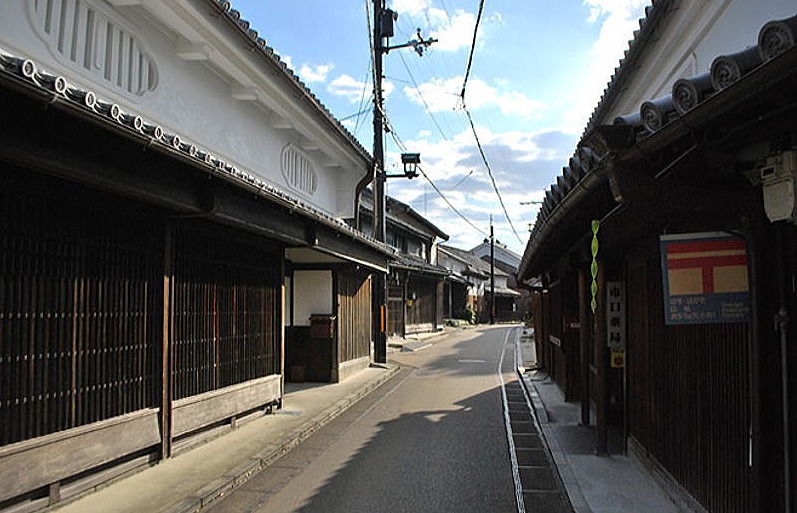Someya juniza kagura in Ishioka


Date: 19th April
Location: Someya 染谷1856, Ishioka 石岡 city, Ibaraki 茨城 prefecture
Access: Take the Joban Line from Ueno and get off at Ishioka 石岡 Station. About 1 hour by express train (2,500 yen) about 1.5 hours by ordinary train (1,500 yen). Take the Kantetsu 関鉄 Green Bus for Kakioka Shako 柿岡車庫 via Hayashi, and get off at Murakami 村上 bus stop (15 minutes on foot). Or, take the Ishioka Gurururin sightseeing bus (1,000 yen) and get off at Hitachi Fudoki no Oka 常陸風土記の丘. It’s a 5-minute walk. If you want to rent a bicycle, there is a bicycle rental service in front of the station for 300 yen with an additional 700 yen deposit (to be returned when the bicycle is returned.
*This article is based on interviews conducted in 2015

One lucky day. A family of goldfish decided to go out. The child asked his parents.
“Where are we going?”
“We’re going to see a sacred performance to pray for rain.”
This picture, in which such a conversation can be heard, is by Utagawa Kuniyoshi 歌川国芳, a painter active from the late 18th to 19th century.


It’s not easy for goldfish to go out. They have to dodge a variety of natural enemies along the way.

Oh my Gosh. We could be lost.

Isn’t this the right way to go?
In fact, there are two shrines here, and since they have the same name, it is even easier to make a mistake. And the festivals take place on the same day. And they both worship the deity of dragon. Locals consider one to be a male dragon and one to be a female dragon. To get to the shrine where the kagura is performed, the hill of Hitachi-Fudoki is a landmark. As you head that way, you will see a road to the cemetery on the way. Pass through there and climb the hill. The shrine you are aiming for is at the end of the road.

Hey, we’re on the right road.

But we have to go up these stairs.

Whew! We can finally see the shrine.

Oops, we’re finally here, just in time for the 11am start.


The First act ~Sarutahiko

”Hey, goldfishes. How did you get here? I’m Sarutahiko, the first program performer. As you know, I’m the deity who guides things.”
I thought I had to see it at least once.
We got lost, but…
You don’t have to say anything extra.
Ha-ha-ha (laughter)
Well, have fun with it.


It’s always nice to have someone who can explain things to you (but in Japanese).
Not that many Japanese come here, and no one would dream of a foreigner, either. If they came to visit, they would be welcomed with open arms.
The second act ~ Ya-daijin

“Hey there, goldfish. I see you’ve come to see me.”
Oh, it’s Mr. Ogre. You don’t look too tough.
“My appearance is to enhance the Ya-daijin. As soon as I’m eliminated, I’m out. Here comes the Ya-daijin!”

“Haha, I’m Ya-daijin. I will use this bow and arrow to drive away the bad ones.”
Ya is an arrow. Daijin can mean many things, like minister or respectable person. I think the name here means a fine god.
But his face looks pompous, as if he were a minister.
“What? Did someone say something? I’ll put it all together and exterminate them together.”

Hey, hey, hey!

The 3rd act~ Long sword user

“I am the Sadaijin( Minister of the Left)”.
Black face. A raven-tengu (Crow-billed goblin).
They call it the dance of the long sword too.

Let’s get rid of the bad things that are doing us harm. Eia-Eia-Ah!
The 4th act ~Dance of sword


I am Udaijin (Minister of the right).

To explain a little, in Japan, there is an event for girls on March 3, when they display hina dolls. They are modelled after the old Emperor’s family. The emperor and queen are at the top. Below them are the Minister of the Right and the Minister of the Left.
The two in the forth row from the top are them. But all these decorations cost a lot of money.
Sowing seeds


What did this deity start?
Sowing. In other words, from here, kagura shows the sowing of spring. Once the earth, and all the evil things around it, have been driven away, they now move on to the spring sowing, and then to the fall harvest. This form of kagura is very common. It is the very essence of the old life of the Japanese people.

The foxes cultivate the rice field

”For God’s sake, Enyakola
Good rice grows, Enyakola
One more thing, Enyakola”


“I’m a little tired. Why don’t you take a break?”
“Already? What should I do?”
“I have stiff shoulders. Please rub my shoulders.”
“She’s a noisy wife. Here, that’s better. Please do the same for me this time.”
“You don’t even work.”
“You son of a bitch. You turned me upside down.”



It’s a bit of a couple’s comedy.
You have to include these elements or the audience will get bored. In the old days, this is exactly the kind of life the people watching lived.
planting seeds

”I hope everyone is doing well. I wish you a great harvest this year.

Shrine maiden’s dance

Let’s pray to God.
This dance is performed by an elementary school girl.
Mochi (rice cake) throwing

” Everyone’s gathered here. Are you so happy that we came out?”
”They all just want rice cakes, don’t they?”
”Anyway, it’s harvest time. Hopefully we’ll harvest a lot this fall.”
audience ”Here, over here, over here.”



The a person whose role it is to give explanation said that many people leave after this one, right?
If that’s the case, why not make it the last one like other kagura?
It proves that they are keeping the old form. It is possible that the kagura has been handed down even older than the oldest kagura of Washinomiya Shrine in the Kanto region. The people added the rice-cake throwing later, and that’s why the order is like this.
Sacred sake


Programs that have retained their most ancient form. It is monotonous by itself. This dance is meant to give thanks for the harvest and to offer sake to the gods.
Ebisu ~Fishing sea bream

“I’m Ebisu. Well, where shall I go fishing today?
“Oh, Sir Ebisu is fishing again.”
” When I think it’s someone, it’s Hiotoko and Okame.”
“We’ll help you too.”


“Oh, this is a big one. Hey, you, Hyottoko, help me out.

”We caught a big one. Let’s go home.”
”Hey. But Ebisu-sama is a different person when it comes to fishing. Ebisu-sama is not like a god only when fishing.”

The 12th program ~Open the Amano-iwato door

I am the mythical and familiar “Tajikarao”. I am about to open Ama-no-Iwato (the Great Rock Door) and welcome you, Amaterasu-sama.


The kagura ended with the safe appearance of Amaterasu. Now, let us go home.
Ending



Let’s stop by “Hitachi-Fudoki-no-Oka.” Hey, it looks like spring.
What is this big lion’s head?
At the Ishioka festival, a large lion’s head leads huge lion dance parade . That is famous. Let’s come see it sometime.
By the way, will it rain?

”Wow, it’s coming down fast. That’s the Dragon God.”
What do you mean you’re a goldfish and you’re in a big hurry for rain? And if you look closely, you can see that the rain is pond skater.

In this country, such things are also sold as figures.
cf.
*https://www.adachi-hanga.com/ukiyo-e-en/category/33
*https://bunkashisan.ne.jp/bunkashisan/08_ibaraki/7041.html
